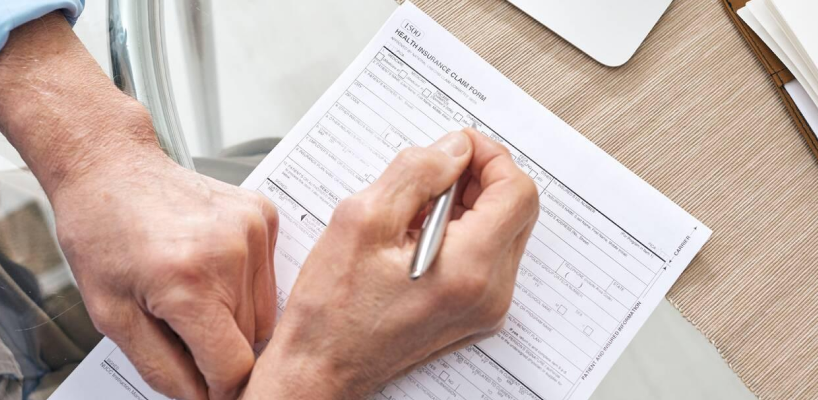HIPAA Compliance Checklist

May 23, 2024
Table of content(s)
- What’s Included in a HIPAA IT Compliance Checklist?
- Are You Meeting HIPAA Compliance Requirements?
- How to Ensure Your Compliance with a HIPAA Security Rule Checklist?
- What are the Essential HIPAA IT Requirements?
- How to Conduct a HIPAA Risk Assessment Checklist?
Achieving HIPAA compliance involves a few steps. First, you need to assess your current compliance status to see if there are any gaps. Next, you have to review your IT systems to ensure they meet HIPAA standards and also cover areas like data encryption and access controls. Furthermore, you need to implement security measures to adhere to HIPAA’s stringent rules and safeguard the sensitive information of the patient.
To do this you can make use of compliance tools to streamline the process. So, let us understand the essential requirements needed for HIPAA and explore the HIPAA compliance checklist through this blog.
What’s Included in a HIPAA IT Compliance Checklist?
Explore what is included in a comprehensive HIPAA IT compliance checklist.
| Checklist Item | Description |
| Data Encryption | Encrypt all electronic protected health information (ePHI) to safeguard privacy. |
| Access Controls | Implement stringent access controls to ensure only authorized users can access data. |
| Regular Security Updates | Keep systems updated with the latest security patches and software updates. |
| Secure Messaging Systems | Use secure messaging platforms for transmitting sensitive patient information. |
| Data Backup and Recovery | Maintain regular backups of ePHI and implement effective data recovery procedures. |
| Risk Assessments | Conduct regular risk assessments to identify and address potential security threats. |
| Employee Training Programs | Provide comprehensive training on HIPAA regulations and security best practices. |
| Incident Response Plans | Develop and implement plans to effectively respond to and mitigate security incidents. |
Are You Meeting HIPAA Compliance Requirements?
To know that you are meeting HIPAA compliance requirements, you must know the current practices against HIPAA guidelines. Ensure that patient data is securely stored, accessed, and transmitted. Then, you must review policies and procedures to guarantee they align with HIPAA standards. The staff needs to be trained regularly on HIPAA regulations and enforce strict privacy protocols. Conducting audits and assessments to identify any areas of non-compliance is also important to address them quickly and maintain HIPAA compliance.
How to Ensure Your Compliance with a HIPAA Security Rule Checklist?
Here are some effective strategies for ensuring compliance with a HIPAA Security Rule checklist.
- Understand HIPAA Security Rule requirements thoroughly.
- Conduct a comprehensive risk analysis to identify vulnerabilities.
- Implement administrative safeguards for protecting PHI.
- Deploy physical safeguards to secure facilities and devices.
- Utilize technical safeguards like encryption and access controls.
- Develop contingency plans for data backup and disaster recovery.
- Regularly review and update policies to stay compliant.
- Provide ongoing staff training on HIPAA requirements and security best practices.
What are the Essential HIPAA IT Requirements?
Let us explore the fundamental IT requirements essential for HIPAA compliance.
Data Encryption:
Encrypt electronic protected health information (ePHI) to ensure confidentiality.
Access Controls:
Implement strict controls to manage access to ePHI and prevent unauthorized entry.
Regular Security Audits:
Conduct routine audits to assess system vulnerabilities and ensure compliance.
Secure Communication Channels:
Use secure channels for transmitting ePHI to maintain data integrity and confidentiality.
Data Backup and Recovery:
Establish robust backup systems to protect against data loss and facilitate recovery.
Disaster Recovery Planning:
Develop contingency plans to minimize downtime and ensure continuity of operations during emergencies.
Staff Training:
Provide comprehensive training to employees on HIPAA regulations and IT security practices.
Continuous Monitoring:
Implement monitoring systems to detect and respond to security incidents promptly.
How to Conduct a HIPAA Risk Assessment Checklist?
Learn the steps to effectively conduct a HIPAA risk assessment checklist.
Identify Potential Risks:
Identify all potential risks and vulnerabilities to protected health information (PHI).
Evaluate Existing Security Measures:
Assess the effectiveness of current security measures in place.
Assess Impact:
Determine the potential impact of each identified risk on PHI confidentiality, integrity, and availability.
Prioritize Risks:
Prioritize risks based on severity, likelihood of occurrence, and potential impact.
Develop Risk Mitigation Strategies:
Develop and implement strategies to mitigate identified risks effectively.
Document Findings:
Document all findings, including identified risks, mitigation strategies, and action plans.
Review and Update Regularly:
Regularly review and update the risk assessment to address new threats and changes in the environment.
Engage Stakeholders:
Involve stakeholders in the risk assessment process to ensure comprehensive coverage and buy-in for mitigation efforts.
Conclusion
Having an idea of a HIPAA compliance checklist requires careful attention to detail and adherence to established protocols. Healthcare organizations can ensure the confidentiality, integrity, and availability of sensitive patient information by following comprehensive checklists. These include IT compliance, security rules, and risk assessments. Also, regular monitoring, continuous updates, and ongoing staff training are essential for maintaining compliance. This is necessary for the evolving and dynamic landscape of healthcare regulations. So, with a commitment to best practices and vigilance against potential risks, organizations can safeguard patient data. This way they uphold the highest standards of privacy and security.





